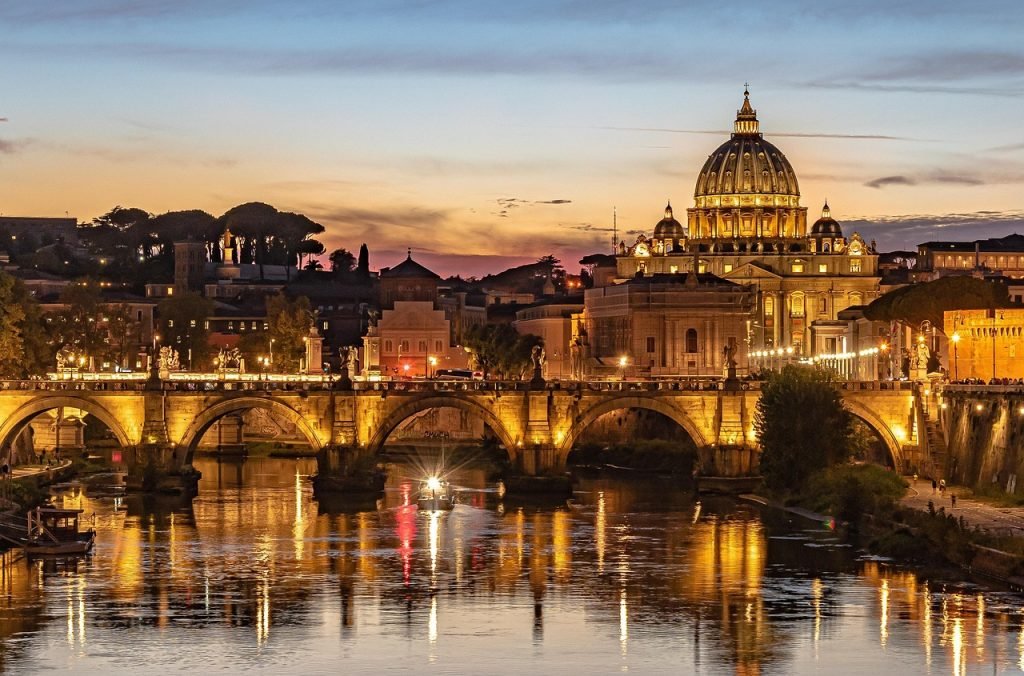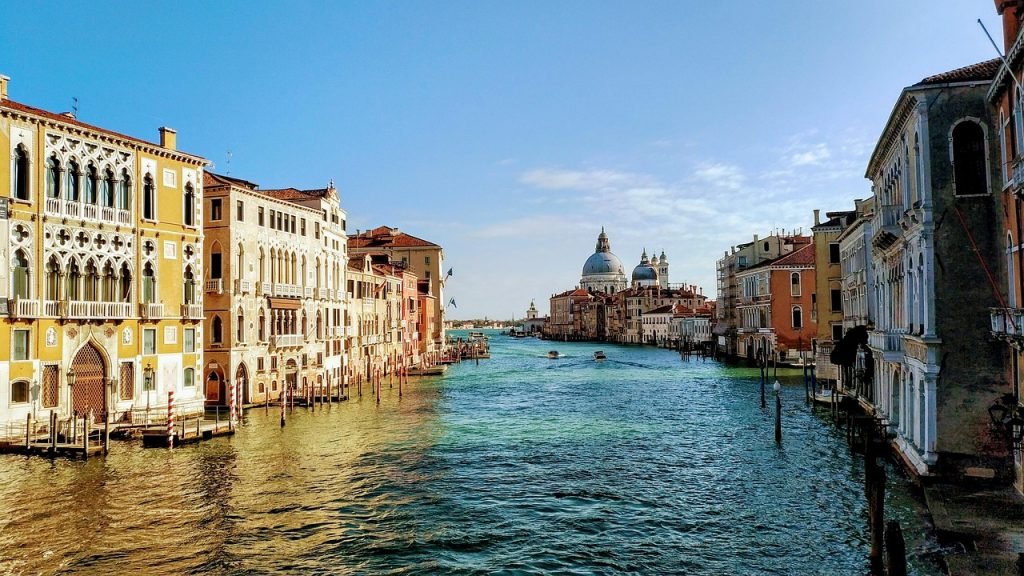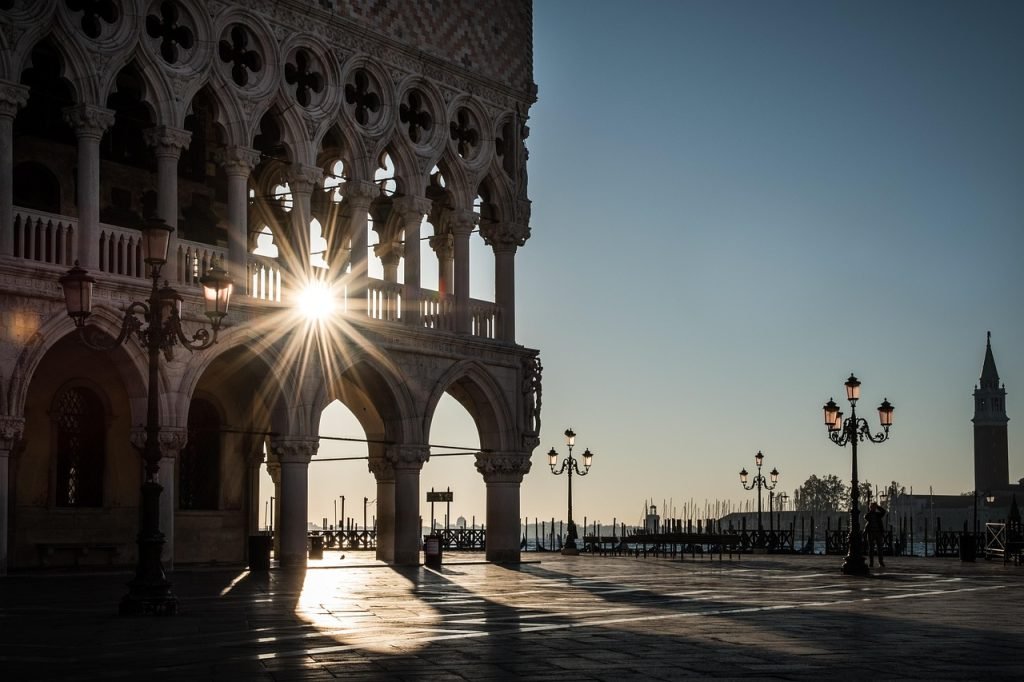Where do I even begin with Rome? This city isn’t just my capital – it’s my first love, my recurring obsession, my excuse for spontaneous weekend escapes whenever life gets too predictable. While other Italians might prefer their regional treasures (and yes, Florence is magnificent, Venice is magical), I am completely, hopelessly, eternally in love with Rome.
Every time I step off the train at Termini, every time I catch that first glimpse of the Colosseum from Via dei Fori Imperiali, every time I hear the fountains singing their ancient songs – my heart does that little Italian skip that reminds me why this city has seduced souls for over 2,700 years. This isn’t just tourism for me; this is coming home to a lover who never fails to surprise me.
Let me share with you the Rome that makes my Italian heart sing, the experiences that justify every excuse I make to return, the moments that prove why Romans aren’t arrogant when they call their city eterna – they’re just stating facts.
The Colosseum: Where History Lives and Breathes
Cost: €18 for Colosseum, Roman Forum, and Palatine Hill access | My verdict: Worth every single euro and more
Dio mio, I’ve been here dozens of times, and I still get chills walking through those ancient arches. This isn’t just a ruin – it’s a time machine that transports you into the roar of 50,000 spectators, the drama of gladiatorial combat, the raw power of an empire that conquered the known world.
But here’s what most tourists miss: the Colosseum is just the beginning. Your ticket includes the Roman Forum and Palatine Hill, creating a full day of archaeological poetry. Stand where Caesar walked, where emperors plotted, where the fate of civilizations was decided. The stones beneath your feet have witnessed more history than most countries can claim.
My insider tip: Book the underground and upper levels tour (additional cost, but transformative). Seeing the underground chambers where gladiators waited, understanding the complex machinery that made spectacles possible – it’s like discovering the secrets behind the greatest show on earth.
Perfect timing: Early morning or late afternoon when the light turns those ancient stones golden and the crowds thin enough to let you breathe in the history.
Vatican City: The Greatest Museum Experience on Earth
Cost: Vatican Museums €20 standard, €25 with online booking | My truth: This is hands-down the best museum I’ve ever experienced – easily in my personal top 3 worldwide
The Vatican Museums aren’t just art galleries – they’re humanity’s greatest treasure chest, accumulating masterpieces for over 500 years. This is where you understand why Rome has seduced artists, pilgrims, and dreamers for millennia. Every corridor reveals another masterpiece, every room contains enough art to anchor entire national museums.
And then you enter the Sistine Chapel, and Michelangelo’s ceiling destroys every expectation you thought you had about human artistic capability. The “Creation of Adam” – that nearly-touching finger moment between God and man – it doesn’t just change people, it redefines what’s possible when genius meets divine inspiration.
I’ve watched hardened Roman taxi drivers tear up in that chapel. I’ve seen teenagers forget their phones exist. When you realize Michelangelo painted this lying on his back, neck screaming in pain, because the Pope commanded it… bene, that’s when you understand true artistic devotion.
Don’t miss in the Vatican: Raphael Rooms (pure Renaissance perfection), the Gallery of Maps (cartographic poetry), St. Peter’s Basilica (free entry, priceless experience). And if you can handle the 551 steps, climb the dome for views that make Rome look like God’s personal garden.
Vatican survival strategy: Book early morning slots, bring comfortable shoes, and prepare for crowds that make Italian family gatherings look intimate. But trust me – this museum experience will spoil you for every other gallery on earth.
The Pantheon: Architectural Miracle in Plain Sight
Cost: Free (though guided tours cost extra) | My amazement: How is something this perfect free?
Incredibile! The Pantheon is 2,000 years old and still makes modern architects weep with envy. That dome – that impossible, physics-defying dome – was the largest in the world for over 1,300 years. Standing beneath it, especially when rain falls through the oculus and creates that magical interplay of light and water, you understand why emperors believed gods walked among men.
This is where Raphael rests, where ancient Roman engineering meets spiritual transcendence, where you can literally touch history (though please don’t – the guards get cranky). The fact that it’s free feels like Rome’s gift to the world, a daily reminder that some treasures belong to everyone.
Local secret: Visit during rain. The water falling through the central opening creates an almost mystical atmosphere that transforms tourists into pilgrims.
Trevi Fountain: Where Dreams Become Tradition
Cost: Free (plus coins for wishes) | My ritual: Never miss throwing that coin
Yes, it’s touristy. Yes, it’s crowded beyond belief and every guidebook mentions it. But when you see that baroque masterpiece emerging from the narrow streets of central Rome, when you hear Neptune’s horses charging through sculpted waves, when the evening lights turn the water into liquid gold – you understand why 3,000 people visit daily.
The tradition says one coin ensures your return to Rome, two brings romance, three guarantees marriage. I’ve thrown hundreds of coins over the years, and I keep returning, I’m happily married, so the magic must work. Plus, those coins fund Roman social services – even your wishes help the city.
Photographer’s tip: Early morning (6-7 AM) for crowd-free shots, or evening for romantic lighting. Midday is madness, but the energy is undeniably infectious.
Castel Sant’Angelo: Fortress, Palace, and Panoramic Paradise
Cost: €16 standard admission | My discovery: Rome’s most underrated treasure
This cylindrical fortress tells Rome’s entire story in stone – from Hadrian’s mausoleum to papal refuge to prison to museum. But what steals my heart every visit is the view from the terrace. St. Peter’s dome dominates the skyline, the Tiber winds like a silver ribbon, and Rome spreads in all directions like an open history book.
The Bridge of Angels leading to the castle, designed by Bernini, creates one of Rome’s most photographed approaches. But inside, the papal apartments reveal how Renaissance popes lived when they needed to escape Vatican politics or Roman uprisings.
Hidden gem: The opera performances in summer turn this ancient fortress into magical theater under the stars.
Roman Forum: Where Civilization Was Born
Cost: Included with Colosseum ticket | My reverence: This is where Western civilization learned to walk
Mamma mia, standing in the Roman Forum is like standing in the birthplace of law, politics, architecture, and urban planning as we know them. These ruins once bustled with senators debating, merchants trading, citizens living the daily life of history’s greatest empire.
The Via Sacra (Sacred Way) where victorious generals paraded, the Arch of Titus commemorating Jerusalem’s conquest, the Temple of Vesta where sacred flames burned – every stone whispers stories that shaped our world.
My favorite moment: Sunset from Palatine Hill, looking over the Forum toward the Colosseum, when the ancient stones glow gold and you can almost hear the echoes of Roman voices.
Villa Borghese: Where Romans Live and Breathe
Cost: Park free, Gallery €15 (advance booking required) | My local secret: The park is mandatory – this is where real Roman life happens
When Rome’s intensity overwhelms (and it will), Villa Borghese offers 80 hectares of green sanctuary in the city’s heart. But here’s what tourists miss – this isn’t just a park, it’s where Romans go to live. Families gather for Sunday picnics, couples row boats on the beautiful small lake (yes, you can rent one!), joggers maintain their sanity, and children play while nonni (grandparents) watch from benches.
The Pincio Terrace is absolutely mandatory – not just for tourists, but because this is where locals come for the most romantic sunset views in Rome. St. Peter’s dome glows in the distance, the entire city spreads below like a Renaissance painting, and you understand why Romans never tire of their hometown.
The Galleria Borghese houses Bernini sculptures so lifelike they seem to breathe and Caravaggio paintings so dramatic they invented chiaroscuro. Apollo and Daphne in marble captures the exact moment of mythological transformation – it’s sculpture as stopped time. But honestly? Sometimes I prefer just sitting by the lake, watching Roman families enjoying their Sunday, feeling the city’s peaceful heartbeat.
Local tip: Rent a rowboat on the laghetto (small lake) – it’s ridiculously romantic and costs almost nothing.
Booking essential for Gallery: Only 2 hours allowed, advance reservations required, but those 2 hours will redefine your understanding of artistic genius.
Trastevere: Rome’s Bohemian Soul
Cost: Free to wander, priceless to experience | My neighborhood crush: Where real Romans live
Cross the Tiber into Trastevere and discover Rome’s most authentic neighborhood. Narrow cobblestone streets hide family trattorias serving recipes passed down through generations. This is where Romans eat, drink, and live away from tourist hordes.
Santa Maria in Trastevere basilica showcases medieval mosaics that rival Ravenna’s masterpieces. The evening passeggiata (ritual stroll) fills streets with multigenerational Roman families maintaining traditions older than most nations.
My restaurant tip: The best Roman cuisine hides in trattorias where pasta is handmade. One of the best trattoria is Tonnarello.
Spanish Steps and Piazza di Spagna: Elegance Personified
Cost: Free | My fashion moment: Where Rome meets Paris in style
The Spanish Steps aren’t just stairs – they’re baroque theater where Romans and visitors perform the daily drama of la bella figura (making a good impression). Luxury boutiques line Via del Corso, the Fontana della Barcaccia by Bernini’s father graces the piazza’s base, and the views from the top encompass Rome’s terracotta rooftops.
This is where Keats lived and died, where the Romantic movement found Italian inspiration, where every film about Rome includes mandatory scenes.
Spring magic: When azaleas bloom on the steps, creating a pink and white floral cascade that transforms the entire piazza into natural art.
The Food: Rome’s Holy Trinity of Pasta
Budget reality: €15-25 for lunch, €25-50 for dinner with wine in authentic places
Roman cuisine isn’t fancy – it’s perfect. And there are three primi piatti that you absolutely cannot miss in Italy, all perfected in Roman kitchens: Amatriciana (with tomatoes, guanciale, and pecorino that tells the story of shepherds and love), Carbonara (made with just eggs, pecorino, guanciale, and black pepper – no cream, ever!), and Cacio e Pepe (the most difficult simplicity in cooking – just cheese, pepper, and pasta water technique passed down through generations).
These aren’t just dishes – they’re Roman philosophy made edible. Each one represents centuries of refining ingredients until only perfection remains.
My commandments: Never order cappuccino after 11 AM. Always eat where Romans eat. Never rush a meal – food is sacred, time is flexible. And if any restaurant offers carbonara with cream, run immediately.
Market magic: Campo de’ Fiori morning market for ingredients and atmosphere, Testaccio market for authentic Roman eating where locals still shop daily.
Hidden Rome: My Favorite Ones
Palazzo Altemps: Roman sculptures in intimate Renaissance setting (€10)
Baths of Caracalla: Ancient Roman luxury preserved in massive ruins (€8)
Aventine Hill Keyhole: Perfect St. Peter’s view through Malta Knights’ gate (Free)
Palazzo Massimo: Roman frescoes that rival Pompeii (€10)
The Roman Reality: Practical Magic
Best time: October-November and March-May when crowds thin and weather perfects
Getting around: Walk everything in the center – Rome rewards pedestrians with constant discoveries
Budget truth: €60-80 per person daily including major attractions, good meals, and gelato (lots of gelato)
Why Rome Owns My Heart (And Will Capture Yours)
Rome isn’t just beautiful – she’s alive, breathing 2,700 years of triumph, tragedy, art, and ambition. Every street corner reveals another layer of history. Every fountain tells ancient stories. Each church houses masterpieces that would anchor entire museums elsewhere.
But what makes me return again and again isn’t just the monuments – it’s how Romans live among these treasures with casual magnificence. They buy groceries next to temples, attend school in Renaissance palaces, drink coffee in piazzas designed by Michelangelo.
Rome doesn’t preserve history in museums – she lives it daily, making the past present and the eternal immediate.
When you walk these streets, when you throw that coin in Trevi Fountain, when you stand beneath the Pantheon’s impossible dome – you become part of a story that began before Christ and continues today. You become Roman, if only for a moment.
And once Rome claims a piece of your heart, she never gives it back.
Arrivederci until your return – because Rome always calls her lovers home.


